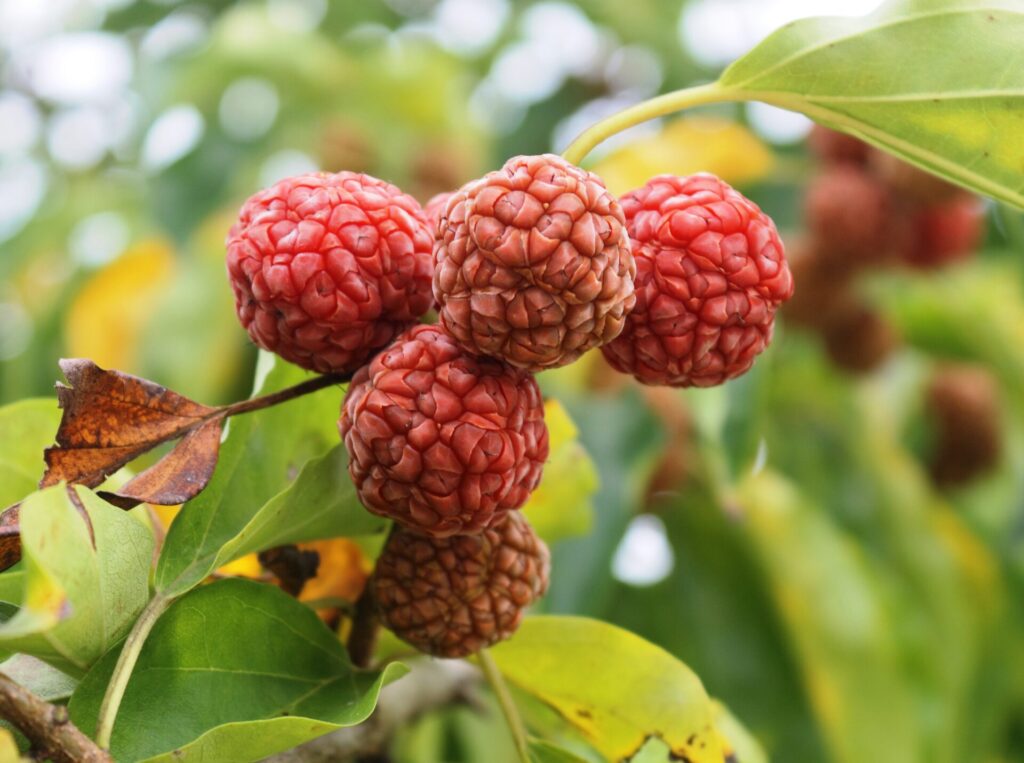(Mandarian Melonberry) This under appreciated perennial, dioecious (male and female
flowers on different plants) tree has fruit related to mulberry and fig with growing heights of 25 feet
and the same width if left to grow for about 30 years. It’s family is Moraceae. The bark ripples with
deep furrows and in the spring thru summer both types of flowers are green and pea- sized. The
male flowers turn yellow as the pollen ripens and is released, while the wind-pollinated female
flowers develop many small stigmas over the surface of the immature fruit. Male plants occasionally
have a few female flowers which will set fruit. Female trees are larger and more robust than male
trees. The che fruit is not a berry but a collective fruit, in appearance somewhat like a round mulberry
crossed with a lychee, 1 to 2 inches in diameter. The ripe fruits are an attractive red or maroon-red
color with a juicy, rich red flesh inside and 3 to 6 small brown seeds per fruit. Ripe fruit have a sweet
flavor which is often compared to that of a fig with notes of watermelon. Alternative names are
Chinese mulberry, Silkworm tree, and Mandarin Melon Berry.






